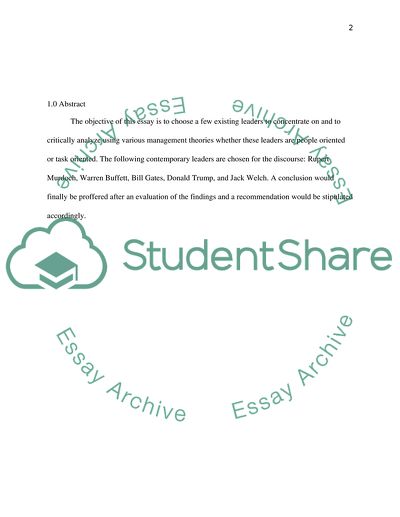Cite this document
(Successful Leaders in Contemporary World: People versus Task Oriented Essay, n.d.)
Successful Leaders in Contemporary World: People versus Task Oriented Essay. Retrieved from https://studentshare.org/human-resources/1734146-which-leaders-tend-to-be-most-successful-in-todays-business-world-people-oriented-or-task-oriented
Successful Leaders in Contemporary World: People versus Task Oriented Essay. Retrieved from https://studentshare.org/human-resources/1734146-which-leaders-tend-to-be-most-successful-in-todays-business-world-people-oriented-or-task-oriented
(Successful Leaders in Contemporary World: People Versus Task Oriented Essay)
Successful Leaders in Contemporary World: People Versus Task Oriented Essay. https://studentshare.org/human-resources/1734146-which-leaders-tend-to-be-most-successful-in-todays-business-world-people-oriented-or-task-oriented.
Successful Leaders in Contemporary World: People Versus Task Oriented Essay. https://studentshare.org/human-resources/1734146-which-leaders-tend-to-be-most-successful-in-todays-business-world-people-oriented-or-task-oriented.
“Successful Leaders in Contemporary World: People Versus Task Oriented Essay”, n.d. https://studentshare.org/human-resources/1734146-which-leaders-tend-to-be-most-successful-in-todays-business-world-people-oriented-or-task-oriented.


